Announcement
Collapse
No announcement yet.
Big valve GS1000 head
Collapse
X
-
Big valve GS1000 head
What year did the 1000s switch to the bigger valve head? I picked up a set of flatslide carbs but need to know what head to look for so the ports arent tiny. Plan on doing some porting to free up some more hps as well.Tags: None
-
 rudeman
rudeman
All the 8-valve GS1000s share the same valves. They did however use larger intake ports from '80 - on. This was done to match the increased throat size for the BS34SS CV carbs.
-
 Crankenstein
Crankenstein
Ah gotcha, thats what I needed to know. Is there a casting number or way to tell them apart besides measuring the port itself?
Comment
-
 madmikeracing
madmikeracing
Tempter 650 Valves can work. I think I have a set of 4 in my shop in origanal suzuki wrapping, Mike
Comment
-
 Rensdw
Rensdw
Originally posted by madmikeracing View PostTempter 650 Valves can work. I think I have a set of 4 in my shop in origanal suzuki wrapping, Mike
This is interesting, if the valves are interchangeable between temper and the GS that will make it much easier for people doing the GS450/GR650 head swap and overbore, and want to get some high performance valves.
There is much more stuff made and still available for the bigger GS'es, as you all know.
Comment
-
There is a marking under the cylinder head.
S1 is definitely for the VM 26 carbs and S5 is for the GS 1100 version with the D shaped exhaust port. (the black one on the pictures)
I don't know the number for the BS 34 carbs?
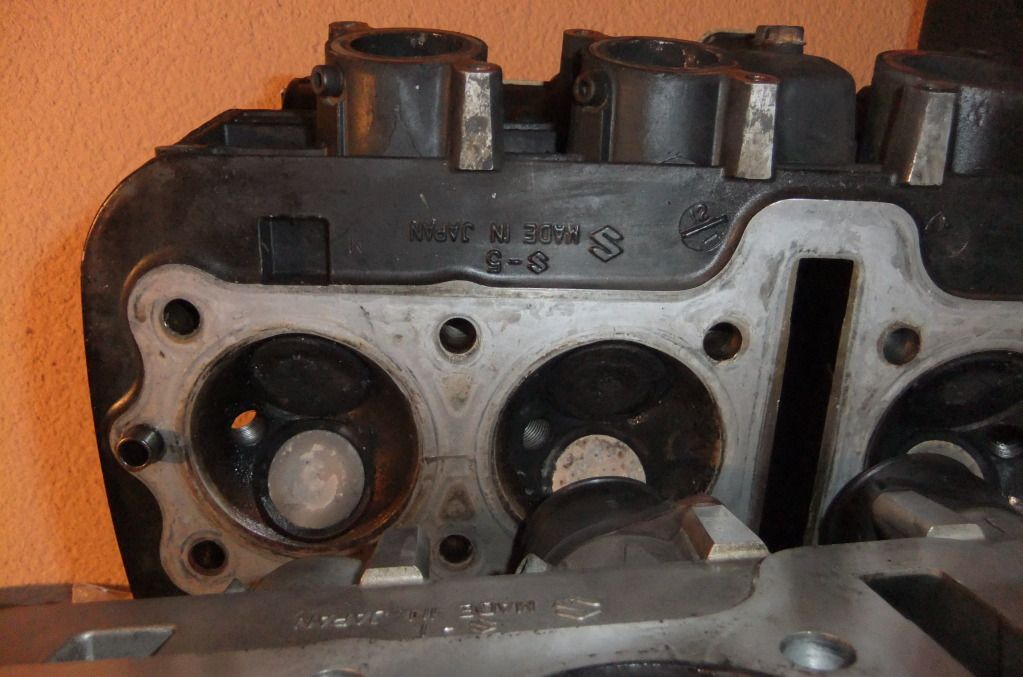

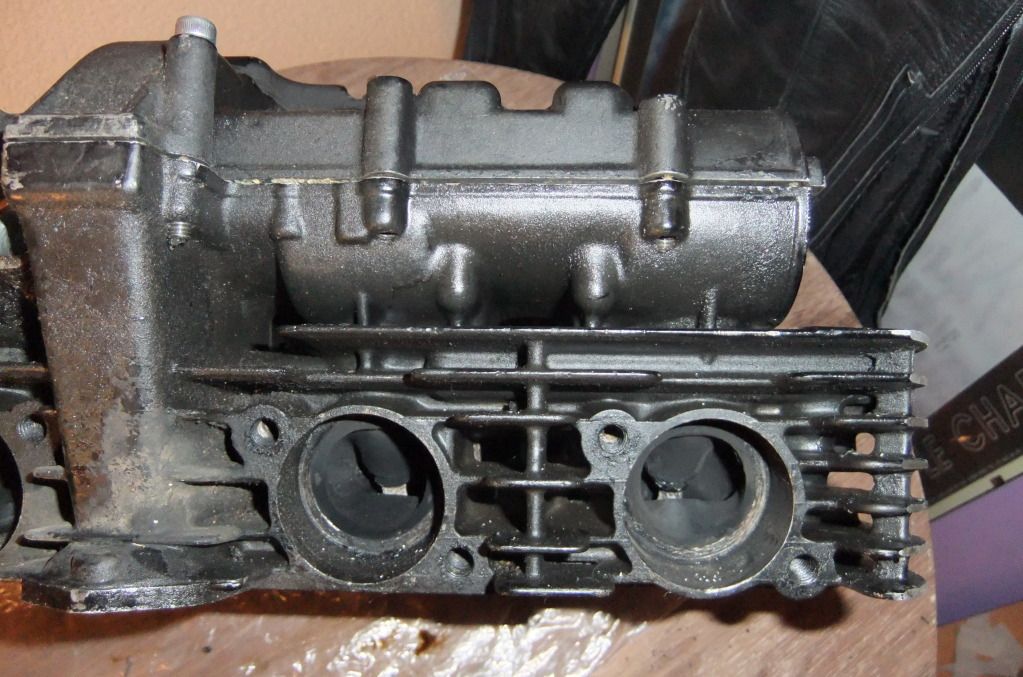
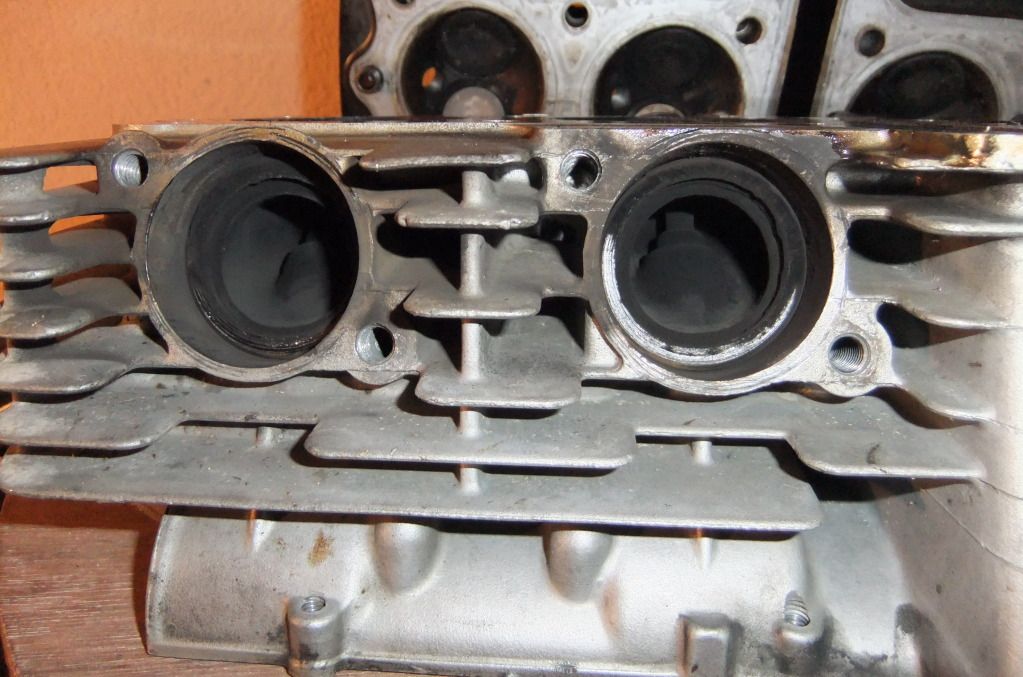 sigpicJohn Kat
sigpicJohn Kat
My bikes: CB 77, GS 1000 ST Cafe Racer with GSXR 1052 engine, GS 1000 ST, XR 41 Replica with GS 1085 engine,
GS 1100 SZ Katana with GS 1135 EFF engine, KTM Superduke 1290 R 2020
Comment
-
 boris.h
boris.h
I made some calculus about sizing valves...
valves diameters are good on these motorbikes, for a max power around 9500. If you want a little more, you can first port the valves seats, just to increase a little that diameters, without changing the valve....this is a way of increasing the diameter without changing everything, increasing the max power rpm at 9800 / 10000. You have to ask yourself if a max power range is efficient, regarding the $$$ investment..?
personnaly I was the same before and now I ever try to spend €€ getting more torque as power...
For example I have a gs 550, and i'm working on putting a gs 650 top end and head. I calculated valves diameters, this calculus gives me original valves diameters. So I'll just port valves seats and that's all.... I'll spend my money on smg else
Comment
-
Bigger port is not better.
the term of the day is PORT VELOCITY>
big port heads came on GS1100 shaft drives from 82~84 GS1100G and GK..
Now as stated before they came with larger ports with larger carbs -- BUT ALSO a longer stroke crankshaft 66mm compared to 64.8mm of a chain drive GS1000/997cc.
a builder's problem of using this combination is the port velocity flowing thru a larger volume port with LESS displacement and LESS stroke length at lower RPMs' - Your biggest most noticeable difference is going to be at off idle and in the mid range. This difference will produce LESS torque and less power!! This is going to be your problem on the street, worse if you carry a passenger.
you go and port a S-5 all you want - get some Kawasaki intake insulators and flat slide carbs , put 39 or 40mm intake valves and I'm telling you now you are going to go SLOWER make less power and be all disappointed.
the cure to make a big port worth doing and make improvement in power and torque is more displacement like 1240cc NOT 1085cc - get a longer stroke crankshaft - or install a 6 psi turbo and fan cooled oil cooler. I've done all this - and a well modified small port cylinder head will be your best bet for a street engine that lives it's whole life under 8K rpm....
Drag racing you can get away with it but I have done what Byron Hines did to a 2 valve GS and it aint cheap and you have to rev it from 5K to 12K all the time.
A magic number is 88~90CFM @ .460" thru a small port using a 40mm int valve feeding a 310cc cylinder - that will get you very close to a port velocity of 300 feet per second -- try to match that and you'll be a popular engine designer.
here is a example of a big port head S-5 made bigger but guess what I ran into after doing this ? the maximum reasonable limit for GS1000 engines. I quit sold it all and moved on to TSCC design.
http://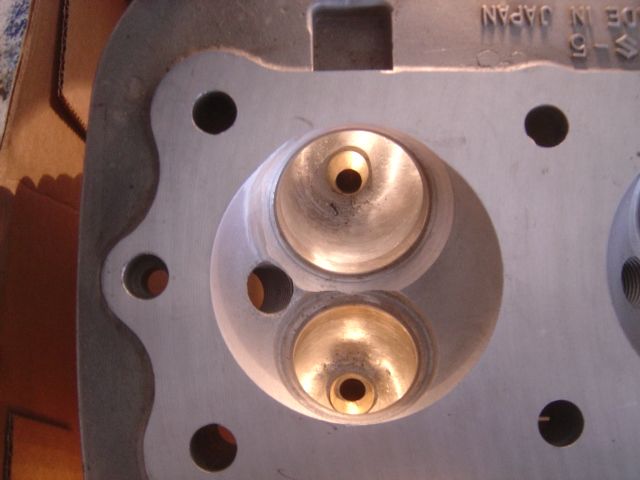 [/URL],http://
[/URL],http://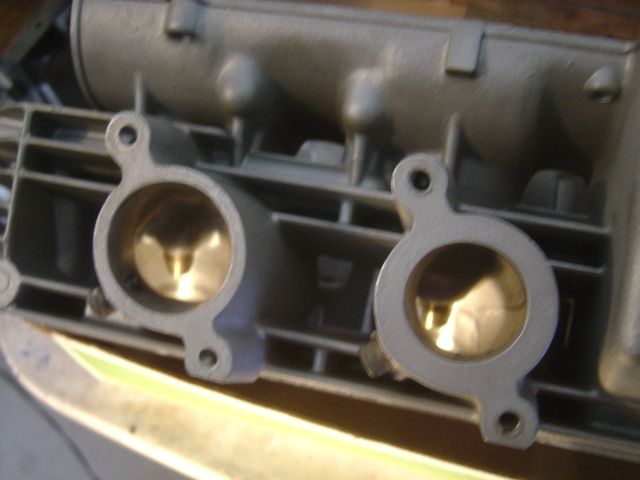
plenty of room in a small port to make over 140 HP in 1105cc and have a torque level above 70 ft/lbsSUZUKI , There is no substitute
Comment
-
OR, you can mill the head .040", run SHORTER duration cams (240-250 @.050 duration!), stock valves, 34 RS Mikunis, & STILL have an 1105 motor that creates good port velocity & drivability at reasonable (as in NOT a race engine) rpm. I've done it & they work well. They pull good two up from 2500-10,000 rpm. I'm still a fan of 16 valve motors though, like Trip, & won't own any 8 valve stuff myself. I'll build them for you though!!Originally posted by trippivot View Postthe term of the day is PORT VELOCITY>
a builder's problem of using this combination is the port velocity flowing thru a larger volume port with LESS displacement and LESS stroke length at lower RPMs' - Your biggest most noticeable difference is going to be at off idle and in the mid range. This difference will produce LESS torque and less power!! This is going to be your problem on the street, worse if you carry a passenger.

Ray.Last edited by rapidray; 11-12-2015, 04:36 PM.
Comment
-
I'm by no mean an expert on these subjects but having smaller diameter exhaust pipes must help increase the port velocity or am I wrong?
When I installed a Kerker K2 exhaust system on my GS 1000 ST I got the feeling that the engine was far more torquey and responsive?
I'm currently installing a GSXR 750 1991 exhaust header on a GS 1000 and again the diameter of the pipes are much smaller than on the OEM machine.
Must be a good reason for that?sigpicJohn Kat
My bikes: CB 77, GS 1000 ST Cafe Racer with GSXR 1052 engine, GS 1000 ST, XR 41 Replica with GS 1085 engine,
GS 1100 SZ Katana with GS 1135 EFF engine, KTM Superduke 1290 R 2020
Comment
-
can you tell I am not working at the bike shop today?
first I love your project gs in gsxr frame..john kat a tuned exhaust is more about sound waves than volume.
now about the skinny pipe john kat has . The exhaust port only needs to flow 60% of what the intake flow is - after that you get no substantial power improvement in larger exhaust diameter. (exception to exhaust percentage being turbo and nitrous engines) basically it is the sound waves at the right time we need to help scavenging - more than a fat 'ol pipe - one mention of reversion - that is when the sound waves reverse and push backwards -don't worry your skinny pipe will work great using a silencer and street riding . top speed at redline maybe leaving a little on the table. but you are getting more good than bad....
Ray's approach is an effective solution... I agree and it may be less expensive than mine, facts be told, the bike we are talking about is slower than a SV 650 coming out of a tight curve no matter what you do. ( except out ride the other guy)
milling .040" and short duration will make more combustion efficiency getting you away from the stop sign-without revving the heck out of it and slipping the clutch but in reality you are just shadowing the slow intake charge velocity at low rpm until pistons get moving faster -then all this rigger-more-all solves itself -yeah until power the shuts off -remember short cam timing? - but this is street bike and you will get a ticket if you try to see what I am talking about . we need dyno sheets to really see what is going on .
my approach will work with any displacement-of N/A GS1000 chain drive - using a small port head, carb size diameter relative to intake valve diameter, light crafty porting , big valves, long duration medium to hi lift cams and 4-1 exhaust relative to exhaust cam timing are just the way I prefer to make things happen from idle to redline.
matching and balancing everything makes a flatter smoother torque line and more horse power is a by product -- torque does the work, horsepower is how fast the level of work can be done.SUZUKI , There is no substitute
Comment
.png)
Comment